Many HR leaders are constantly grappling with how to boost employee engagement in a hybrid work environment. It’s a clear verdict that hybrid work is here to stay into the unforeseeable future. While the tough parts of the global COVID-19 health pandemic are behind us (e.g. lockdowns, health passports, severe travel restrictions, etc…) many of us are dealing with other challenges such as financial instability and mental health. But, the business must continue and employees must keep trekking along. It all seems really hard, and frankly, it is really hard. While our workplace situations and challenges are significantly more complex today, HR teams are still tasked with ensuring they build and lead an awesome employee experience—awesome culture and top-notch engagement.
Learn how to implement employee well-being into your total rewards with our free guide.
Before we dive into the top things that we recommend that organizations think about when boosting employee engagement, it’s important to clarify a key point. The key point is that employee engagement, or disengagement, depending on how you look at the situation, has been a challenge for a long time, far before COVID hit our shores. It’s not a new phenomenon—engagement and disengagement have remained relatively flat during the past 20+ years. This statistic may differ depending on your source (we love Gallup – view here). Even with significantly more attention being paid to boosting employee engagement, we haven’t really seen much of a positive difference during this period of time. BUT… when you look at engagement between employees who always work remotely, sometimes work remotely and never work remotely, you see a significant difference with the “always work remotely” group seeing higher levels of engagement. While the data paints a strong picture of keeping some form of remote work intact, it is still critical for organizations to focus on redesigning and reimagining how they operate their businesses. After all, the research shows that employees view in-person interaction as a favourable thing—fostering stronger relationships and abilities to collaborate.
Here are our top recommendations for leaders to boost employee engagement in a hybrid work environment.
- Expectations need to be more clear than ever before—organizations are made up of a group of diverse people who perform different tasks, while all moving towards common business objectives. Managers and leaders need to be crystal clear about what they expect from their employees. “Sort of clear” won’t cut it—don’t leave any ambiguity whatsoever. People like a defined sandbox in which they can operate—of course, they need room to move around but they need to know what is expected of them so they can operate autonomously.
- Employees want meaningful work—people are naturally motivated by things they like and have a positive perception of. Of course, not everything you do on a daily basis are things you love to do. That’s not reality. But, as leaders, it’s important to connect meaning to everything your employees do, from day-to-day tasks to how work supports the greater good of an organization.
- Keep a really close eye on employee well-being—burnout is highest among employees who solely work in the office, and lowest among those who only work remotely. Within a hybrid model, it’s important for leaders to keep an eye out for this and act quickly when they see signs of employee burnout. For tips on how to spot potential burnout, please click here. At ScaleHR, we consider employee well-being to be the new “workplace currency”.
- Schedule intentional 1-on-1s—leaders need to regularly check in on their employees to ensure that they have what they need to do their best work, feel supported and have the chance to connect. This is a fantastic way for leaders to build trust with their employees by showing them that they care about them as human beings. These conversations don’t need to be long but they need to be more frequent.
- Invest in your leaders and managers—leaders and managers are the keys to organizational success, particularly in a hybrid work environment and challenging business climate. But, they need help as well. They need a lot of help and investing in their development, learning and skills is mandatory—training, coaching, and everything in between.
- Multi-faceted communication—with employees working in various places in multiple timezones and geographies, employing a robust, connected, and easy-to-use technology infrastructure is critical. Seamless integration of video, chat, email, social collaboration tools, document management, etc… is the name of the game. If you’re a Google Workplace customer, for example, maximize the platform. Teach employees how to maximize the platform and ensure employees can easily find information when they need it, and wherever. There’s nothing more frustrating and demoralizing when you spend far too much time trying to find stuff or attempting to make a connection with a colleague or manager. The additional investment in workplace tools is easily offset by productivity enhancements and savings in wasting time finding stuff.
You will notice that what engages employees really hasn’t changed much. What has changed is how, when and where we are working. Employees have far more flexibility and autonomy in the new hybrid world of work, and our technological abilities need to keep up with the explosion of workplace technology. With that, how we lead teams and operate in this new normal needs to adapt and change. Business is a constant evolution of balancing the professional and personal lives of employees for the benefit of the organizations that they work for.









